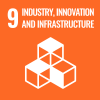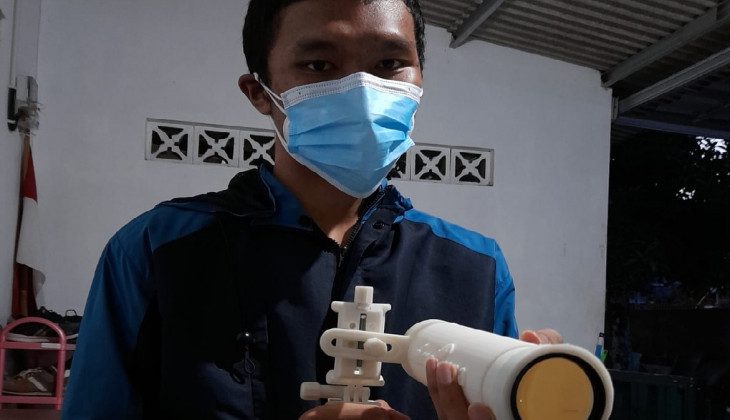Glaucoma is an eye disease that causes nerve damage due to pressure on the eyeball. This pressure occurs due to disturbances in the eye fluid flow system. Glaucoma sufferers experience visual disturbances, headaches, and even blindness.
The Center for Data and Information of the Indonesian Ministry of Health stated that in 2007, 4-5 people out of 1,000 Indonesians suffered from glaucoma. Based on online hospital application data (SIRS online), the number of glaucoma outpatient visits in hospitals during 2015-2017 has increased. However, the number of glaucoma cases and the lack of ophthalmologists in Indonesia prompted four UGM students, Athar Rosyad Partadireja (Biomedical Engineering, 2020), Ajie Kurniawan Saputra (Electrical Engineering, 2018), Muhammad Nur Fahmi (Medicine, 2018), and Synvi Alfajrine Loeba Bistomy (Biomedical Engineering, 2019) to develop a tool that can make it easier for health workers to collect glaucoma data more easily and quickly. Under the supervision of Dr. Indah Soesanti, they developed a device called Aksakirana, which comes from kara aksa: eye and kirana: light, as a glaucoma diagnosis tool based on artificial intelligence.
According to Athar, Aksakirana consists of four main components, hardware in the form of handhelds, mobile and web applications, and machine learning. Handheld Aksakirana is a cellphone camera accessory shaped like a handheld binocular equipped with a 20D indirect ophthalmoscope lens. Meanwhile, the Aksakirana mobile application functions as a medium for uploading photos to the server to study the Aksakirana machine to obtain diagnosis results and severity levels. The Aksakirana web application has a similar function to the mobile application.
“This feature can also be accessed through a computer device and includes features such as downloading images with captioned information on the diagnosis results and downloading glaucoma datasets that can be used in glaucoma research. In addition, ophthalmologists have the right to verify the results of a glaucoma diagnosis and receive donations from philanthropists,” said Athar on Wednesday (8/9).
Aksakirana users can use handheld devices to capture images of the patient’s retina with a cell phone camera. Next, the images will be uploaded to the Aksakirana app or web to receive machine learning. “Users will get the predicted results of glaucoma diagnosis along with its severity. The results of these predictions can then be verified by ophthalmologists and stored in the Aksakirana server to increase the accuracy of machine learning along with a large number of datasets used,” he explained.
Athar hopes that Aksakirana can benefit Indonesians, especially health workers. Therefore, the glaucoma screening process can run quickly and massively. In addition, a biobank as a retinal image storage data in a large data center can later be opened for research purposes.



